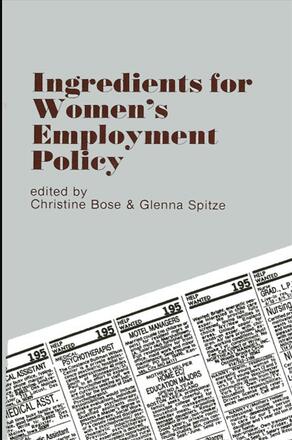
Ingredients for Women's Employment Policy
Alternative formats available from:
Description
Ingredients for Women's Employment Policy gathers together the ideas of sociologists and economists, including both quantitative and qualitative research. Basic descriptive data gathered over the last ten to fifteen years of labor force research and affirmative action legislation indicates high rates of occupational segregation, continuing gender differentials in earnings, and inequitable divisions of household labor. This book represents an important reassessment of the complex mechanisms through which labor markets are transformed and investigates the issue of whether there has been any real progress in eradicating inequality. Each chapter assesses the likely effects of alternative policy strategies in women's employment.
Christine Bose is Associate Professor of Sociology and former Director of Women's Studies at State University of New York at Albany. She is the author of Jobs and Gender: A Study of Occupational Prestige and co-editor of the forthcoming Hidden Aspects of Women's Work. Glenna Spitze is Associate Professor of Sociology and Adjunct Professor in the Women's Studies Program at State University of New York at Albany. She is the co-author of Sex Stratification: Children Housework and Jobs and co-editor of Women and Politics: Activism, Attitudes, and Office-holding.
Reviews
"This collection of essays on women's employment makes an important contribution to the field of women and work. Although the articles cover a wide range of subjects (labor migration, union leadership, occupational segregation, the gender gap in earnings, underemployment and unemployment, and the many issues raised by comparable worth), they form an admirably coherent whole which contributes to a high level of analysis. Collectively the essays keep at the forefront an examination of the structure of the labor market, especially occupational segregation, and use gender as a conceptual framework rather than focusing on the special experiences of women in various occupations and settings. This book represents the latest and most fruitful thinking in a field which is of direct interest not only to academics and scholars, but to everyone concerned with the latest developments in women's increased participation in the labor force. " — Carole Turbin, Empire State College